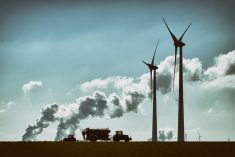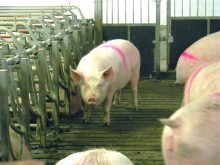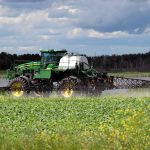The amount of land needed to grow crops worldwide is at a peak, and a geographical area more than twice the size of France will be able to return to its natural state by 2060 as a result of rising yields and slower population growth, a group of experts said Dec. 17.
Their report, conflicting with United Nations studies that say more cropland will be needed in coming decades to avert hunger and price spikes as the world population rises above seven billion, said humanity had reached what it called “peak farmland.”
Read Also

Mazergroup’s Bob Mazer dies
Mazergroup’s Bob Mazer, who helped grow his family’s company into a string of farm equipment dealerships and the main dealer for New Holland machinery in Saskatchewan and Manitoba, died July 6 from cancer.
More crops for use as biofuels and increased meat consumption in emerging economies such as China and India, demanding more cropland to feed livestock, would not offset a fall from the peak driven by improved yields, it calculated.
If the report is accurate, the land freed up from crop farming would be some 10 per cent of what is currently in use — equivalent to 2.5 times the size of France, Europe’s biggest country bar Russia, or more than all the arable land now utilized in China.
“We believe that humanity has reached peak farmland, and that a large, net global restoration of land to nature is ready to begin,” said Jesse Ausubel, director of the Program for the Human Environment at the Rockefeller University in New York.
“Happily, the cause is not exhaustion of arable land, as many had feared, but rather moderation of population and tastes and ingenuity of farmers,” he wrote in a speech about the study he led in the journal Population and Development Review.
The report projected that almost 370 million acres could be restored to natural conditions such as forest by 2060. That is also equivalent to 1.5 times the area of Egypt or 10 times the size of Iowa.
It said the global arable land and permanent crop areas rose from 3.38 billion acres in 1961 to 3.78 billion acres in 2009. It projected a fall to 3.41 billion acres in 2060.
Yield boost needed
Gary Blumenthal, head of Washington-based agricultural consultancy World Perspectives, said the report’s conclusions were not surprising as technology already exists to dramatically boost crop production. But achieving “peak farmland” would depend on the technology being made available globally, he added.
“If we could just get yields in the rest of the world at levels that they are in the U.S. or Europe, we would have substantially more food,” Blumenthal said. “Just using existing farmland more efficiently, would substantially increase supplies. Yields are rising.”
A June 2012 report by the UN’s Food and Agricultural Organization (FAO), however, said that an extra net 173 million acres of land worldwide would have to be cultivated in 2050, compared with now: “Land and water resources are now much more stressed than in the past and are becoming scarcer,” it said, referring to factors such as soil degradation and salinization.
Ausubel’s study admits to making many assumptions — rising crop yields, slowing population growth, a relatively slow rise in the use of crops to produce biofuels, moderate rises in meat consumption — that could all skew the outcome, if not accurate.
It also does not factor in any disruptions from significant climate change that UN studies say could affect farm output with rising temperatures, less predictable rainfall, more floods or droughts, desertification and heat waves.
Still, it points out that both China and India have already spared vast tracts of land in recent decades.
In India, for instance, wheat farmers would now be using an extra 160 million acres — an area the size of France — if yields had stagnated at 1961 levels. China had similarly spared 296 million acres by the same benchmark.
The authors said the idea of “peak farmland” was borrowed from the phrase “peak oil,” the possibility that world use of petroleum is at its maximum.
The study also projected that world corn yields would rise at an annual rate of 1.7 per cent until 2060, against a 1.8 per cent annual gain from 1983 to 2011. By 2060, that would raise world corn yields to roughly the current U.S. average, it said.
Biofuels, the study said, were a wild card in calculations. The study concluded that non-food crop production — for instance, not just sugar or corn used as fuel, but also the likes of cotton and tobacco — was likely to exceed growth in food supply until 2060.
Changing diet was also a big uncertainty as the world population headed toward about 10 billion and simultaneously grappled with problems of obesity and malnourishment. But there were some encouraging signs, the report found.
Meat consumption in China was rising only moderately, far below rates of economic growth. “Fortunately for the sparing of cropland,” it said of world trends, “meat consumption is rising only half as fast as affluence.”


















